CHICHEN ITZA (Day 2)
In the morning we took a cab to some cenotes (natural sinkholes created when a cave ceiling collapses) outside the city. Our driver was quite friendly and social.
Our first stop was Cenote Samula with its amazing blue water. Long roots stretched all the way down from the trees above. The Yucatan peninsula has no above-ground rivers, so all water comes from below ground in the form of rivers, caves or these sinkholes.




Next we visited Cenote Dzitnup (or X'kenen). The limestone was quite slippery and bat noises filled the cave. It was quite dark and exceedingly humid.
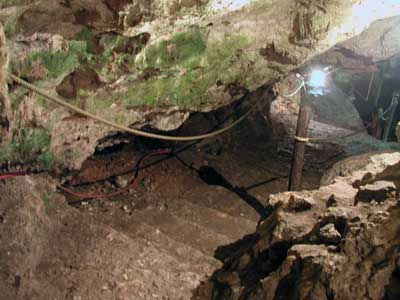



On the way back into town, we swung by the Church of San Bernardino de Siena and the Convent of Sisal, built in 1552 and 1560 to serve both as a church and a fortress.


We then hopped on a bus to Chichen Itza. Chi is Mayan meaning mouth; Chen means well, and Itza is the tribe that inhabited the area: the Mouth of the Well of the Itzaes. The Itzaes settled here in the 9th century. Around the 10th century, the city was invaded by the Toltecs. The two cultures fused, adding the Toltec belief of Quetzalcoatl to the Mayan belief of Chac. It was the Toltecs who were obsessed with human sacrifice. For unknown reasons, the city was abandoned around 1250. In its golden era, it covered about 10 square miles and was home to 50,000 to 100,000 people.

We climbed to the top of El Castillo (the prominent central pyramid) which is almost 100 feet tall. It is estimated to have been built between 650 and 800. Its measurements are related to the Mayan calendar: 91 steps on 4 sides = 364 + the platform = 365 days in a year. Inside is a very steep, narrow passage with slimy walls. Here sits a statue of Chac-Mool.




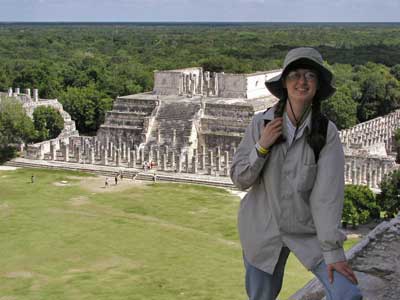


Gran Juego de Pelota (or the ball court) dates to 864. It is the largest one in Mexico and only one of 8 in Chichen Itza, indicating the importance of the game. It is flanked by temples and bounded by towering walls with high stone rings. Some carvings show players men playing; others show decapitations (perhaps the losing team?).










There were many, many different temples to visit. The Templo de los Jaguares y Escudos (Temple of Jaguars and Shields) had a throne of a smiling jaguar.


The Plataforma de los Craneos or Tzompaniti (Platform of the Skulls) was lined with carved skulls and once held the heads of sacrificial victims.

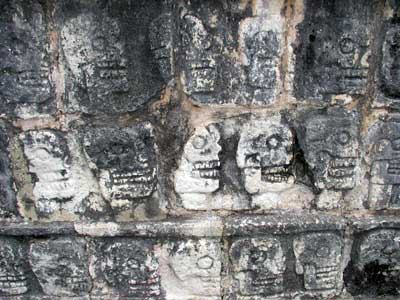
The Plataforma de las Aguilas y los Jaguares (Temple of Eagles and Jaguars) showed these animals ripping out and eating human hearts. It is thought this platform was part of a temple dedicated to the military legions responsible for capturing sacrificial victims.



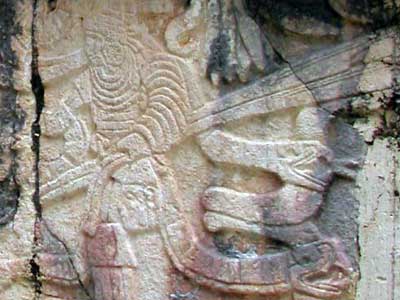




The Plataforma de Venus (Venus Platform) had a flat top and carvings mythical creatures of part eagle, serpent, jaguar and human.

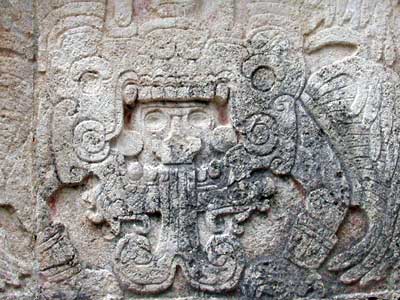
Cenote Sagrado.... or what they called the Mouth of the Well of the Itzaes. Almost 200 feet in diameter and 115 feet deep, this giant cenote was filled with human skeletons. It appears that all sorts of people, children and old people, diseased and injured, young and vigorous, were all forcibly obliged to take that last eternal swim.

Next we wandered over to the Grupo de las Mil Columnas (Group of the Thousand Columns). The main attraction here is the Templo de los Guerreros (Temple of the Warriors). Unfortunately one is no longer allowed to climb to top, but we could walk among the large columns.




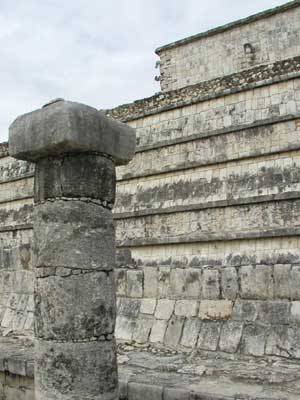

The Columnata Noreste (Northeast Columns) was the crumbling remains of another temple in the complex.




We followed a jungle trail to Baño de Vapor (Steam bath) with its tiny underground room....

... then past the Southeast Colonade to El Mercado (the Market), an elevated gallery and courtyard.



The overgrown jungle path eventually led us to El Osario (the Ossuary or the High Priest’s Grave). Seven tombs with human remains were found inside.



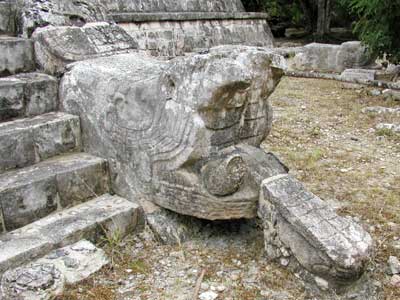
Casa Colorada (the Red House) has several rooms and even a ball court.
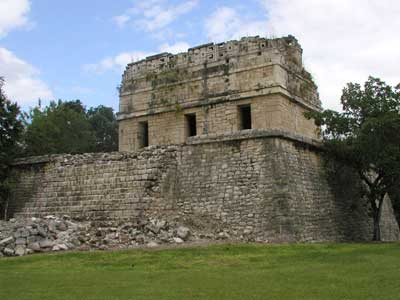
The observatory is named El Caracol (Conch or the Snail) due to spiral staircase inside. The widows are aligned with the appearance of certain stars at specific dates.


At the far end of the complex was the Nunnery. It may have been place for Mayan royalty, but the myriad of rooms resembled a European convent to the conquistadors, hence the name. Although a Toltec sacrificial stone stands in front, the architecture is Mayan. The smaller building, La Iglesia (the Church) was almost completely covered with carvings.




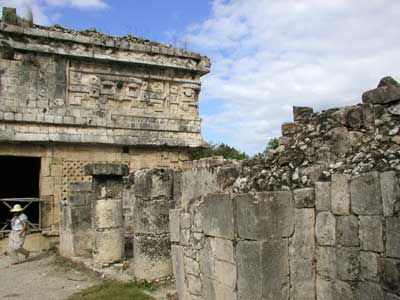

Far from beaten path was Akab Dzib (Writing in Darkness). It is thought to be the oldest building here with central chambers dating back to the second century.
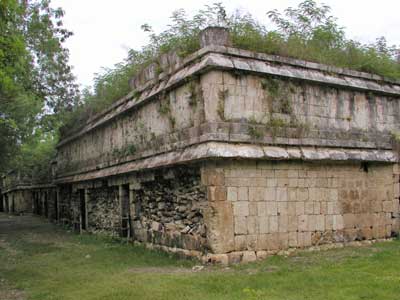
We walked back and caught a bus to Merida, the capital of the Yucatan state. We spent the remainder of the evening enjoying the festivities and music of the main plaza and grabbing some food.
return • continue

